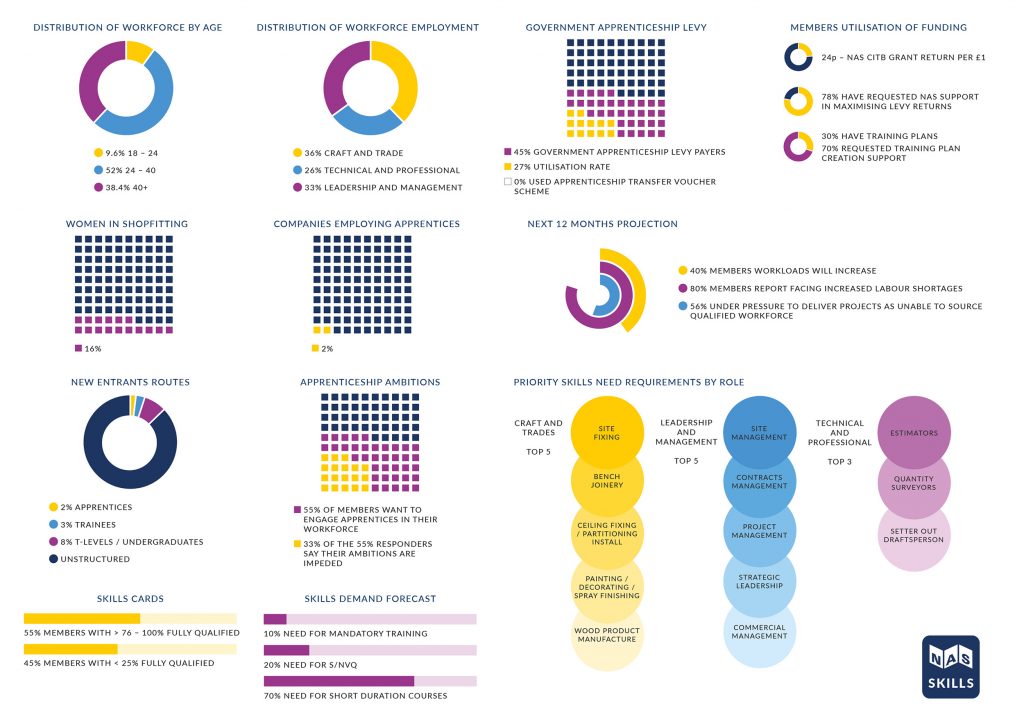Having surveyed the NAS members in quarter 2 of 2022 through our use of the sector wide training needs analysis (TNA), we release those key findings back to you as to the shape and skills demand on a national level. The summary findings give us a baseline measure and a greater understanding of how our sector is shaped in terms of demographics, competency, and the skills demand forecast.
The Background
Companies bearing the NAS logo vary in size, location, and production outputs. From tier one and main contractors to family run companies, some specialising in onsite operations to workshop production construction, and design and management.
We see differences in production types from traditional wood and bench carpentry across into the realms of CNC operations and programming and more, across those specialising in national roll outs such as supermarket installations to those attracting bespoke single shop installs with those jaw dropping and highly instagramable visual impacts. From cabinet makers, site installers, fabricators to architectural metal workers, we are a specialist sector that crosses the boundaries of construction, engineering, and interior design, we’ve been here as shopfitters for a very long time. Protecting our unique yet multi-faceted sector and those very people behind the membership is our priority while pumping new life blood into the future by creating routeways in to attract the talent of the new generation is here at the heart of the NAS.
There’s a blended mix across the four home countries across the UK, some with high levels of direct employees, where others have a smaller core team with a heavier reliance on sub-contractors. No two member companies are the same, but what we can do is look at those features based within our sector via the individual TNA responses and focus on those ambitions and the similarity of pain points which we must address from a skills perspective as we strive to future proof our sector, increase competency and create an attractive sector for the new generation.
Referencing the distribution of workforce findings, the highest demographic of employment rests within the craft and trade sections at 36%, with 26% in the technical and professional range. That 26% usually find their way into the shopfitting world through higher apprenticeships or the university graduate pool or sponsored professional traineeship. Although we know there are shortages in the quantity surveying and estimators’ field, transitioning that knowledge into the shopfitting world is almost a CPD piece. It’s the biggest section, the crafts and trades that are hit the hardest for access into our sector but is the biggest demographic we need to fill.
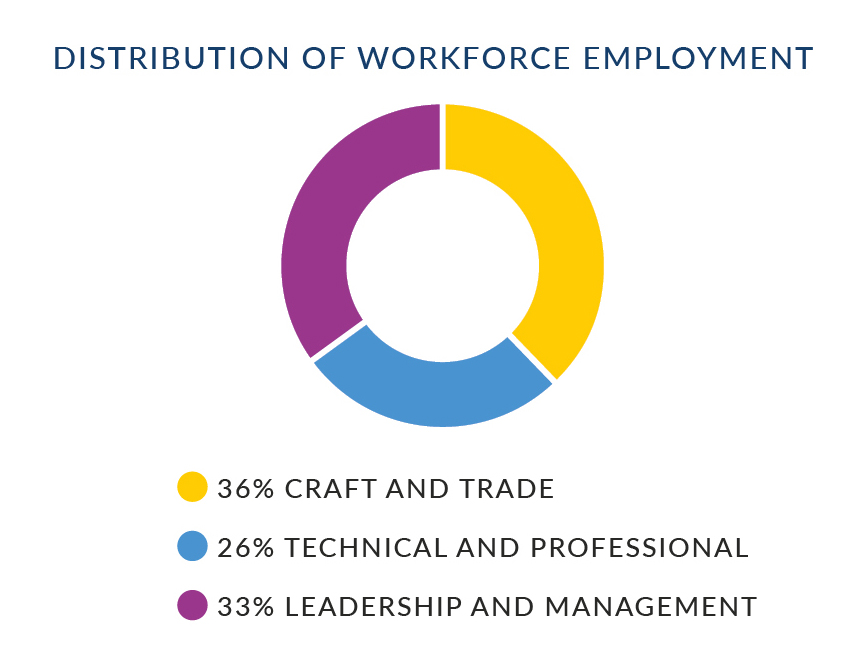
Those headline grabbing findings – Age demographics and new generation entry into the sector.
Construction itself for a long time is regrettably often cited as being behind the curve to modernise and digitise. Although we are gathering pace, catching up to other industries in this millennium has been problematic and for some it will come as no surprise that millennials and generation z’ers represent just 9.6% of our workforce.
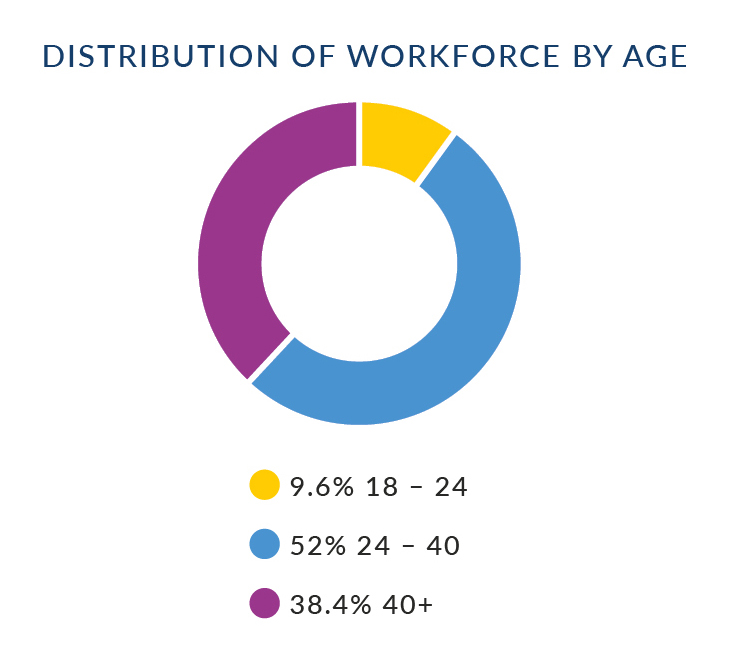
When we questioned the apprenticeship appetite and ambitions, 55% of the membership want to engage and integrate apprentices into their work force now, its recorded that over half have their ambitions impeded.
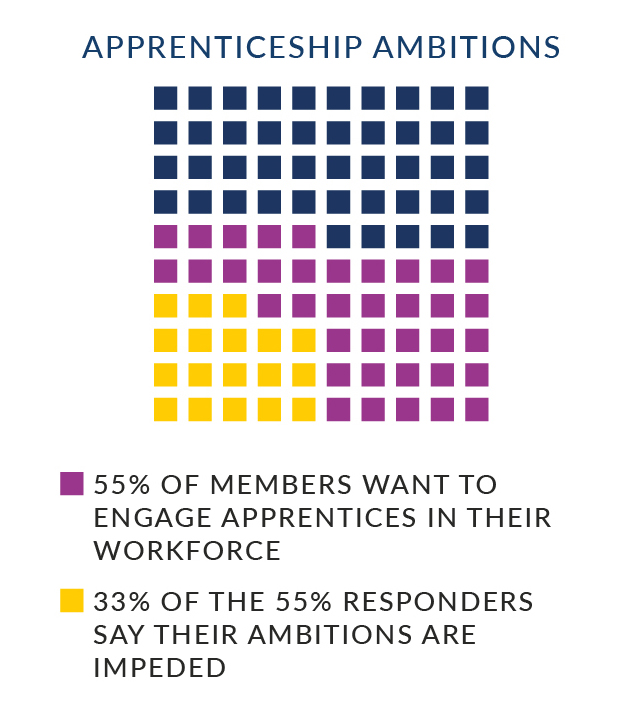
Why is this happening?
Several factors are at play here, the complex image of construction, for those working within mainstream schools and educational institutions is somewhat difficult to understand and truly appreciate. Some overlook construction and focus on boosting their sixth form numbers, those that don’t, often focus on those biblical crafts that can be easily engaged with, such as bricklaying and plastering where school leavers can be placed at FE colleges.
The supply chain where the shopfitting specialist sector rests isn’t promoted in general terms unless you find yourselves engaging schools on career drives. As a result, it becomes more difficult for young people and their influencers to comprehend shopfitting and the interior contractor’s world. Therefore, the rewards our sector offer that exist in terms of sustainable careers and opportunities gets lost in the mainstream. Leaving us faced with an aging workforce with crafts people retiring on average at 45 years old, and that vital wealth of on the tools skills and wisdom departs, leaving us faced with that common problem of attracting new talent and maintaining an operational competent workforce in the here and now.
Our workforce is made of just 2% apprenticeships and that is a hard pill to swallow for those skills champions reading this data, but it is not unique to our sector and is reflective of other UK specialist trade associations.
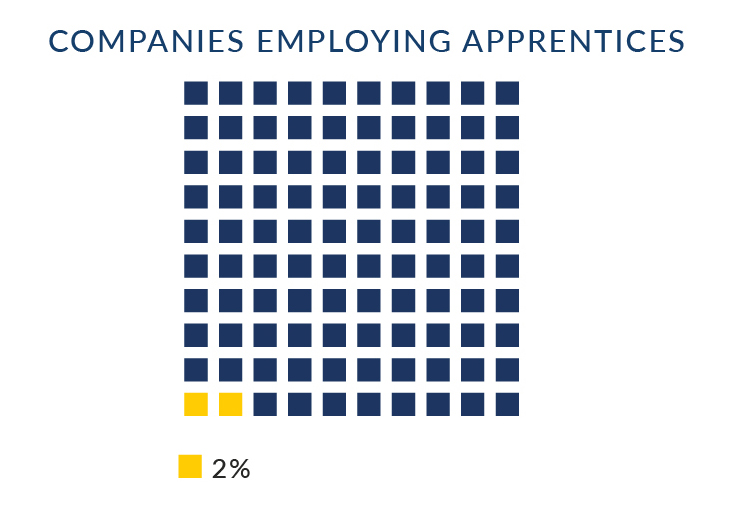
The key reasons cited from our membership in the TNA include the lack of local provision, lack of specialist sector specific apprenticeships and those routeways in on offer, apprenticeship minimum wage and the threat of apprenticeship poverty, and the power of the influencer. When we dig deeper, we can see that even our larger companies who pay the apprenticeship levy – currently at 45%, only 27% of those have utilised it and we report that 0% have accessed the transfer of apprenticeship levy voucher scheme.
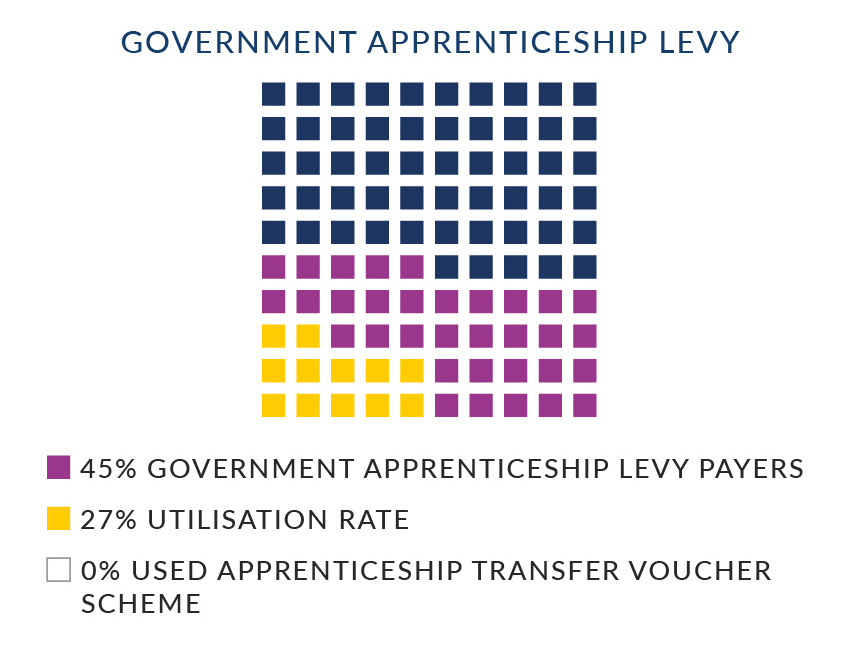
The scheme is based on the movement of apprenticeship levy voucher moving down their supply chain. Several reasons from awareness and understanding can be attributed, but the most common reason is the perception that we cannot share the apprenticeships levy vouchers to our sub-contractor community who make up a large percentage of our work force.
The reasons given above are just the primary sources of the issue. What we do know is what’s on offer at colleges, in particular carpentry and joinery does not always match against what goes on in the shopfitting world. Therefore, when assessed on site, new entrants are studying for key competencies and skills which they cannot be assessed against as they simply don’t match the skills needed on our shopfitting sites or workshops.
There’s also a harsh reality that colleges are also businesses, and for a course or apprenticeship offer to run, they must have the numbers, the bums on seats scenario is at play. Specialisms such as ours will get relegated for courses they know they can fill instantly. To ignore this fact would be unwise.
There are some member companies with the capacity to create their own academies or talent programmes, increasing their supply of young people to combat this, but they are low in comparable numbers and for most members this simply isn’t an option in the current climate.
The problem is here now, and the skills gap isn’t a new thing, its now exacerbated to critical levels and our findings highlight this.
So how is the NAS tackling this? The Call to Action
At the start of 2022 the NAS began the journey of developing its skills arm, NAS Skills. This autumn we are launching our new skills strategy and will welcome in a new NAS Skills Council from across the membership. This council will be proactive in driving change to attack these very issues in the skills arena, through leadership in a collaborative working capacity to create better entry routes in, to attract a new generation, drive competency and together create new standards and qualifications that represent the shopfitting world, a new innovative employer led body.
At the NAS we have already begun the process of building its first Specialist Applied – Skills Programme (SAP). SAP’s are and 18-month provision for new entrants, leading to a vocational qualification resulting in an NVQ/SVQ and are considered by trade associations and employers as “sector apprenticeships.” The new NAS Skills council and its working groups will ensure that its content and the key skills, knowledge, behaviours, and attitudes are reflected within its mandatory, core and additional modular content. This member led and collaborative approach will ensure its fit for purpose and will be driven by the Skills Lead, Amanda Scott. (National Training Manager at the NAS.)
NAS Skills will also examine the feasibility of specialist sector occupational traineeships – a 6-week programme, giving employers early exposure to individual entrants, for suitability for the sector apprenticeship program. Also allowing a new potential entrant to get a window into the sector beyond work experience in to the shopfitting world. Providing members with a second routeway in, allowing growth for the must-needed workforce talent pool and engage new entrants. This avenue will also help prepare an individual in readiness for the SAP.
The two new routeways in can be done in the immediate, and SAP’s can only be developed when there is no existing apprenticeship standard in place. The third entry route for NAS Skills to move towards is the creation of a unique Trailblazer Apprenticeship for Shopfitting once the first two new routeways are rolled out. The development of a trailblazer takes between 3 – 4 years to commission and launch. Our sector cannot wait four years for this to land which is why the SAP is our immediate focus and we anticipate our first set of cohorts for a spring/summer roll out in 2023.
For those without local provisional access we recognise that to combat this, we as a trade association and prescribe organisation must act now and do something. We cannot rely solely on the existing college provision for the reasons given previously. In the longer term, the NAS under the umbrella of NAS Skills will start the journey of becoming its own approved training provider, bringing in the power of our associate members and training partners to create a NAS Academy, a home for our structured training programmes and learning.
If you or any of your team wish to become part of the collaborative works in the attack on the skills gap, or just simply wish to comment please get in touch via email: amanda.scott@shopfitters.org.

